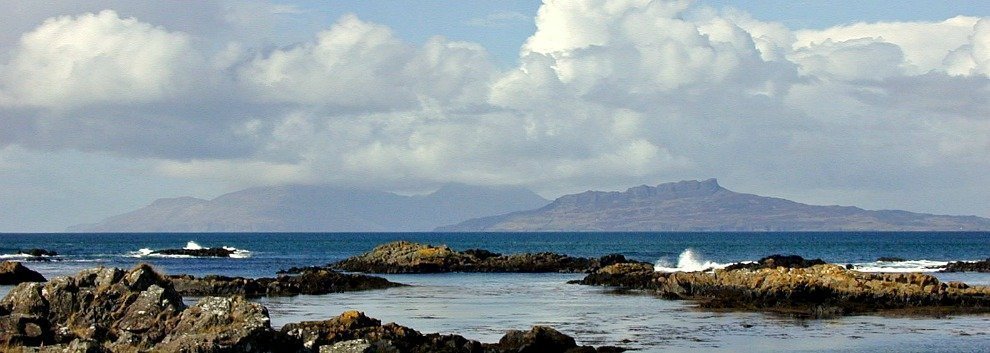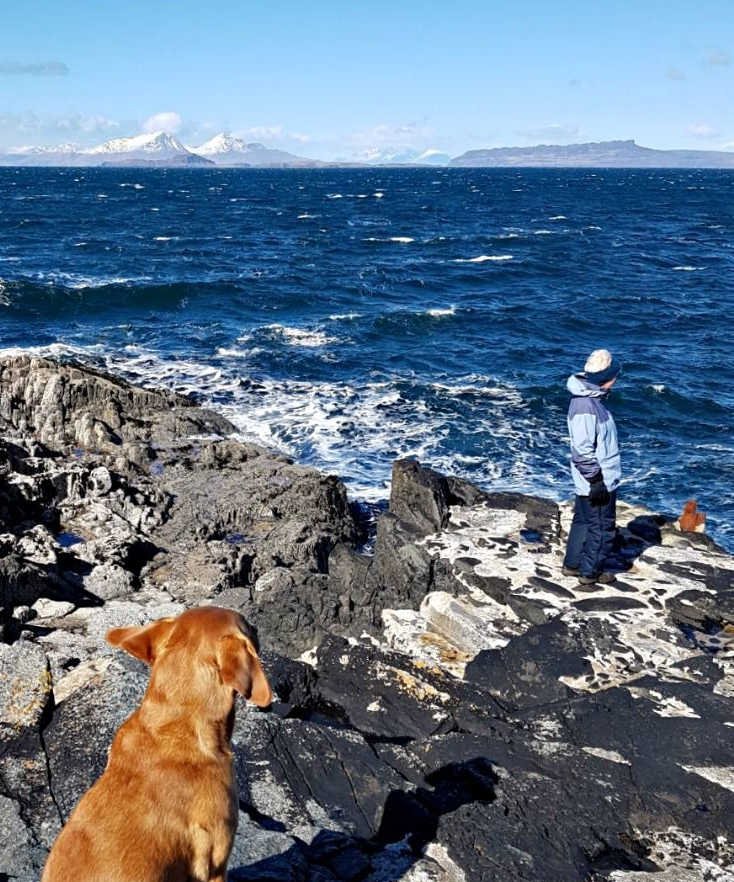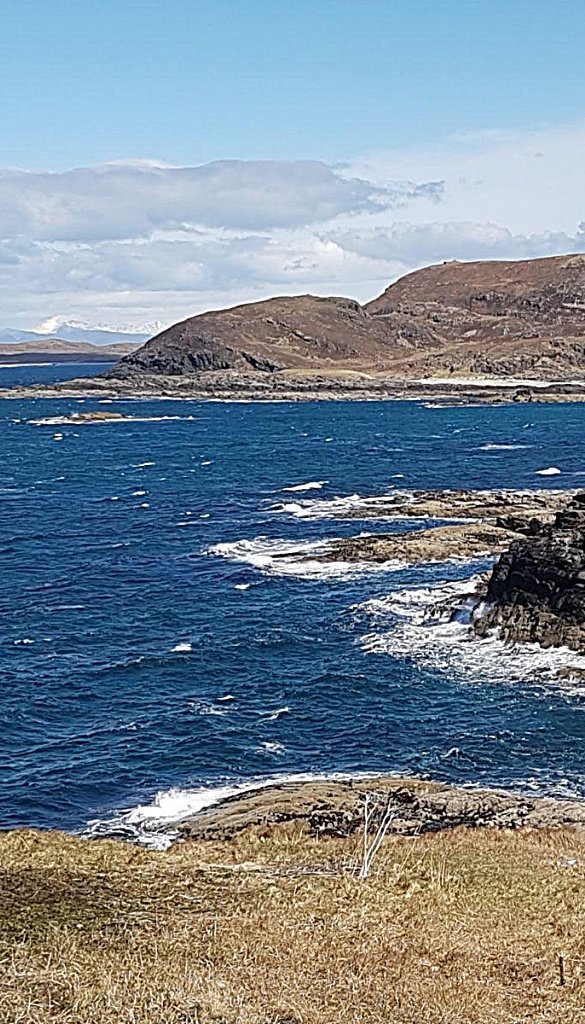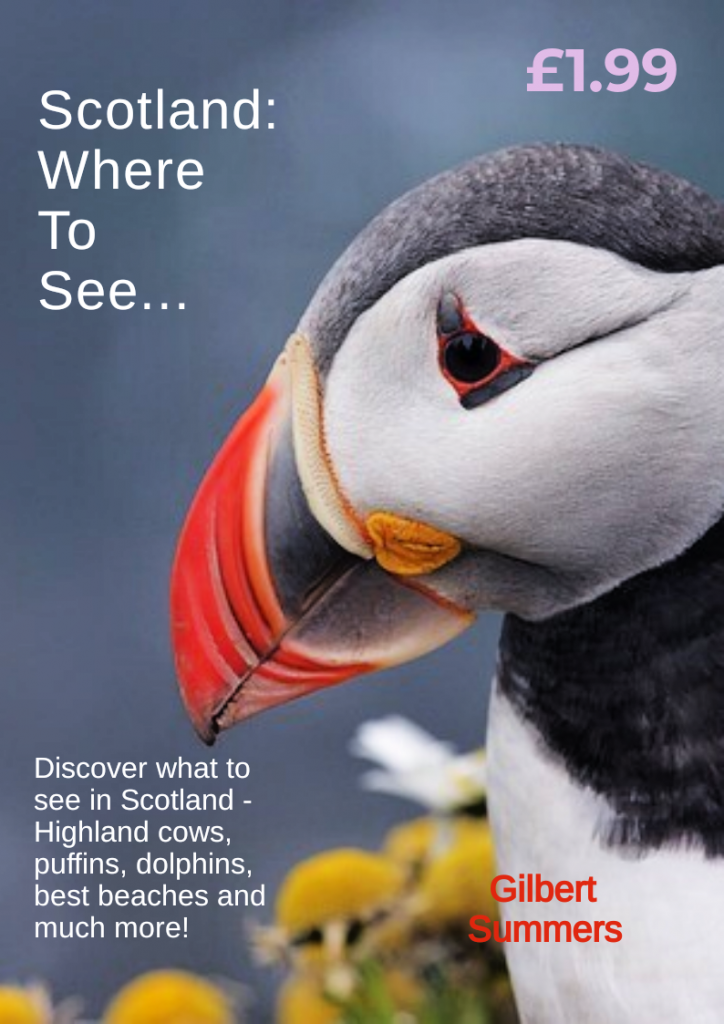The Ardnamurchan peninsula feels more like an island, way out west on Scotland’s seaboard. Rugged with a remote air, getting there is quite a West Highland adventure.
This is a little piece written after the last visit to Ardnamurchan, where we went all the way to the end of the peninsula, to the lighthouse. (As you do…)
This peninsula is always described in guidebooks as ending at the most westerly point in the UK mainland, marked on the Ordnance Survey maps as Point of Ardnamurchan, roughly translated as ‘point of storms’ in the Gaelic.
Say it out loud and roll it around your mouth and it even sounds grumbly and stormy: ‘Arrrid-na-murrri-chan’ . (Work with me here, will ya?
The ‘ch’ is the same as in Scots/Gaelic – like ‘loch’, of course.) Anyway, strictly speaking, the most westerly chunk is called Corrachaidh Mor and lies just to the south of Ardnamurchan Point.
Though it is a peninsula, it might as well be an island. That’s my overall impression – it has that sense of being a long way out west. The driving route from the east, is probably most commonly done via the Corran Ferry across Loch Linnhe (non bookable, frequent).

Ardnamurchan – get to the point
After Salen, this route narrows – winkling its way through the mossy woods west from Salen, along the shores of Loch Sunart. It’s quite a slow progress, up and down and round the rhododendron-shrouded blind bends.

With the car pitching and rolling you might even think you are at sea. It feels a long way – but it really is worth the journey. Just allow enough time.

Exploring the peninsula is a worthwhile option if you are on a freelance ‘see-how-the-Highland-weather-goes’ trip and find yourself in that route-centre of the West Highlands, Fort William, with the weather setting fair for the far west.
Or, you might take it into your head to visit as you look across Loch Linnhe to the inviting gap between the big hills of Ardgour which leads on to Glen Tarbert, Strontian, then Salen, as described above.
Tobermory on the island of Mull is easily included on a trip along the Ardnamurchan Peninsula (or vice-versa) There is a ferry link from Kilchoan on the peninsula.
Come to think of it, if you like the sound of this trip and are coming from further afield (wherever that is…) then you could fly to Glasgow and hire a car. Here’s the place to check car rental prices. They pretty much cover every car rental company.
And we get a wee commission if you book. “Touches forelock obsequiously.” Anyhoo…
Visiting the Ardnamurchan Lighthouse
Yes, the lighthouse at the end of the road can be visited. In fact, between April and October you can climb to the very top. The tower was built in 1849, to a design by Alan Stevenson, uncle of the poet and novelist Robert Louis Stevenson.
The lighthouse is 118ft (36m) high – from sea level even higher, as it is standing on a rocky headland.
Another fact often related is that it is built in ‘Egyptian’ style – this architectural fashion periodically broke out in the 19th century, not just in Scotland.
Anyway, there is a visitor centre, café etc nearby as well – useful for refreshments if you’ve found the drive a bit wearisome. A few pictures supplied by friends on a separate trip show the headland in early spring, with sunshine but a biting wind.

In fact, the wind speed can be judged by noting the angle of the Labrador’s ears. The views from the headland are pretty sensational.
The Skye Cuillins are distant, while the Small Isles can be fairly easily disentangled – distinctive tops of the Rum Cuillin, plus the prominent landmark of the Sgurr of Eigg.
That only leaves the wee island of Muck, with a comparatively low profile.


The Long Road West…
Anyway, make that trip west, for a whole variety of reasons. Take your time. Stop often on the way. Enjoy the birdsong in the oakwoods of Sunart.
On the way west, you’ll find a natural history and visitor centre in Glenmore.
They are so integrated with the local wildlife that last time I was there, they had a pine marten using the place as its den.
There it was, sound asleep – you could look at it through a special window. The owners tell me the beasties are still around.
High hopes of a family party of pine martens taking up residence in the spring. And it’s about as close as you’ll ever get to a real wild pine marten unless you’re very lucky. Discover more on Scottish wildlife.

Atlantic Woodlands of the west
It’s mild here and often wet – fact. But in this moist climate ancient woodlands survive – Scotland’s own rain-forest.
Naturally, there have been losses – in the 18th century the oakwoods were cut down for charcoal, used in the iron smelting process.
It seems to be a fact not often mentioned in guidebooks that this Atlantic woodland is actually older than the Caledonian pinewood which is usually exemplified as the great natural woodland of Scotland.
However, all this greenery and wild nature in the west of Scotland has its price – and that’s the rainfall – obviously why it’s so green in the first place. (Pictured below) As well as being a National Nature Reserve, the Ariundle oakwoods are so green, mossy and other-worldly that you half-expect to meet a hobbit on an elf-guided walk.

Finally, if you really find the road to Ardnamurchan too much to face on your return journey, then – just to repeat – combine it with a trip to Mull, using the ferry from Kilchoan, on the peninsula, to Tobermory on Mull.
That way you ‘escape’ the peninsula’s return journey eastwards – though escape is a term used loosely here. You may not want to leave this especially atmospheric – if out on a limb – part of Scotland.
Ardnamurchan is definitely on the list of out-of-the-way places in Scotland. And there are some off the beaten track locations on the Isle of Mull as well.
Get there directly from Ardnamurchan via the Kilchoan-Tobermory ferry.
Buy the best bits of must-see-scotland.com advert-free!
Like the tell-it-like-it-is-approach? The most helpful and entertaining pages on this website are now available as ebooks covering many aspects of travel in Scotland.
Get them right here in my ebookstore for £1.99 each and look out for future titles!
Download and enjoy each ebook for the price of a (cheap) coffee from CostBucks.
Read them off-line. (Well, you know what the signal can be like in the Highlands…)
Midges, weather, tipping, driving, best time to visit and more…essential background for your trip to Scotland. Fully illustrated in colour but easy to read on your smartphone or e-reader.
Buy Now – £1.99All the favourites in Scotland: Highland cows, puffins, dolphins and more – plus top ten lists – best beaches, views, walks – positively a treasury of information to make your trip a success…
Buy Now – £1.99
